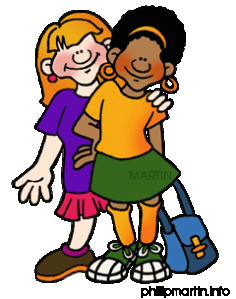Behaviour Management & Crisis Intervention:
Similarities & Differences
| Behaviour Management |
Crisis Intervention
|
|
| Focus | Maintaining stability.
A process. |
Acute; emergency. A desired immediate outcome. |
| Timing | Long term; a process. | Requires immediate outside intervention; short term; a moment in time. |
| Approach | Based on assessment & evaluation; based on more the known than the unknown; in conjunction with the individual. | Based on more unknown than known variables; the individual is more managed/directed/acted upon. |
| The
individual |
Develops and uses
coping strategies with assistance. |
Demonstrates the absence of coping strategies; acted upon. |
| Goals | Setting the individual up
for success; self-reflection; preventing the recurrence of unhealthy patterns & behaviours; achieving stability for the individual & the environment over time. |
Immediate safety, security & comfort; achieving stability for the individual & the environment ASAP. |
Good teacher resource: Six Step Behavior Management Plan
http://www.homeofbob.com/cman/intrvntns/behavorManPln/
sixStep.html
- Focus: Mental Health:
“Addressing Mental health in School Crisis Prevention & Response”
http://wvde.state.wv.us/counselors/documents/
addressingmentalhealth_resourceFINALforBoard.pdf
“Why mental health is important in crisis planning
Traumatic experiences can affect school staff and student mental health and the ability to teach and learn. Having a comprehensive system of school mental health services and supports already in place will assist schools to be better prepared to address the ensuing mental health needs that arise with any crisis. By preparing in advance, schools are more able to prevent crises and be ready to come to the immediate aid of vulnerable students, staff, and families should a crisis occur. It is important not to overlook the impact of these traumatic events on student and staff mental health. Failure to adequately address mental health issues may result in secondary trauma or even post-traumatic stress syndrome (PTSD) that can result in the inability to focus, poor school performance, substance abuse, inflicting abuse on self and others, and even additional school violence (Sonoma Guide). Therefore, it is critical that schools understand and implement best practices to identify and address mental health issues.”
(source: http://wvde.state.wv.us/counselors/documents/
addressingmentalhealth_resorceFINALforBoard.pdf)
- A broader toolkit:
“Crisis Management Toolkit” “The purpose of the DoDEA Crisis Management Toolkit is to help families, educators, and community members understand how schools will ensure that children and personnel are safe and secure in the event of a crisis. It provides information for families and educators about schools’ crisis management policies and procedures, and makes available useful resources to help children and adults cope with the stress and anxiety associated with traumatic incidents.”
source: http://www.dodea.edu/crisis/
In a school setting, the physical environment is very important in terms of intervention strategies.
A secure school includes both the building itself and the surrounding areas.
A positive – secure – school environment includes the following:
1) The structure itself (i.e. maintenance, air quality, sunlight, etc.);
2) Technology – detectors, heating, air-conditioning, phones, alarms, etc.);
3) Visibility;
4) Ambient noise; noise pollution (little to none);
5) Classrooms & hallways: Clean, positive quotes/posters, rules posted in highly visible areas, “decorated”, high interest materials, supervised, etc.
6) Secure spaces for creative & physical activities;
7) Outside space that is well maintained & supervised;
If the above is in place, I feel that the following is more likely to be achieved with regard to intervention strategies:
- Intervention will take place in a timely manner.
- Any necessary “tools” (i.e. phones, alarms, first aid kits) can be accessed in a timely manner.
- Fewer stressors (i.e. noise, confusion, temperature, etc.).
- Visibility (i.e. finding the individual, “escape routes”, as pleasant & calming an environment as possible, etc.).
- A designated safe space for all is easily located (predetermined & adequately equipped).
- Final note: I am of the opinion that when students feel safe and secure in the physical surroundings, they are more likely to respond more readily to outside intervention.
Resources
Readings (online):
http://www.homeofbob.com/cman/intrvntns/behavorManPln/
sixStep.html
http://wvde.state.wv.us/counselors/documents/
addressingmentalhealth_resourceFINALforBoard.pdf
http://rccp.cornell.edu/assets/TCIS_SYSTEM_
BULLETIN.pdf
http://www.sagepub.com/upm-data/15346_Jaksec_
Chapter_1.pdf
Videos:
https://www.youtube.com/watch?v=pBe4A32fpyI
https://www.youtube.com/watch?v=DZwMLGb0M48
https://www.youtube.com/watch?v=9OvdYO4Oi98
ToolBoxhttp:/
/www.integra.on.ca/WAM%20LD%20handbook.pdf




